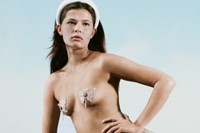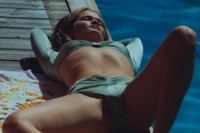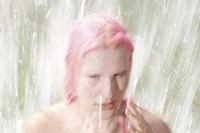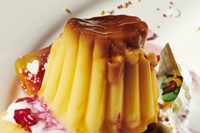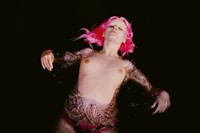Once a year for five years, stylist Georgia Pendlebury and photographer Arnaud Lajeunie have collaborated on MUD, a sensual, “infinite project” lensing girls in nature during the summer months
Keeping up with fashion’s pursuit of innovation can be laborious – clothes are endlessly being reworked into new editorials and campaigns, masterminded by teams of forward-thinking creatives with new ideas. Two such creatives are stylist Georgia Pendlebury and photographer Arnaud Lajeunie, who since 2018, reunite every August, shooting a volume of work for their sensual ongoing photo project, MUD, briefly removing themselves from fashion’s arduous cycle.
The latest book, released this June, was the fourth in the series. Its premise isn’t revolutionary – Lajeunie describes it as a “summer-camp-slash-photography-project,” documenting girls in lush landscapes across Europe in moments of friendship, languor and play, but the rawness and intimacy have a weighty magnetism. “It started as an emergency,” Pendlebury says on a joint call with Lajeunie. “We wanted to step away from the rhythm of editorial. We wanted to take a bit more time.”
Pendlebury and Lajeunie’s chemistry is remarkable. As they reach the top of their game in their respective fields – collaborating with brands like KNWLS, Marni and Panconesi and bolstered by credits in Vogue, Dazed, and AnOther – finding synchronicity with other rising talent is invaluable to the pair. They’ve now known one another for roughly six years, and their conversational volley could be endless if not for slight jabs thrown at each other which briefly stunt the flow of conversation, only to resume in laughter moments later. Aside from both being French (though Pendlebury was born in London), in taste they have much in common: a shared joy for abstracting the mundane, 1960s image referencing, and a love of texture. They even speak in a similar cadence, discussing their work with an emotive, sometimes philosophical sentiment, and regularly reference their “gut” feelings and instincts.
Emotions are felt so viscerally, it’s no wonder Pendlebury and Lajeunie were yearning to break up the pace of the fashion cycle. “We know more or less what we want to achieve, and this project is a big production, even if we do it with no production,” says Lajeunie. “They’re always long days. Especially the first [volumes], we actually had no one with us. It was me carrying all the equipment, Georgia doing everything alone.”
Without the hair, make-up, manicure and production that exist in most fashion stories, there’s a sense of intimacy behind the scenes. Casted by Pendlebury, the models had often never been part of a project like this. The shoots go as follows: the stylist, photographer and models spend their nights in a house together; their days shooting together, eating together, and gradually, a sense of trust is formed among the group – a bond unimaginable in the context of many fashion editorial stories. “I don’t know how but we manage to make them [feel] in such a comfort zone, where they feel so good about the way the work is being done, where they become partners in this adventure,” says Lajeunie.
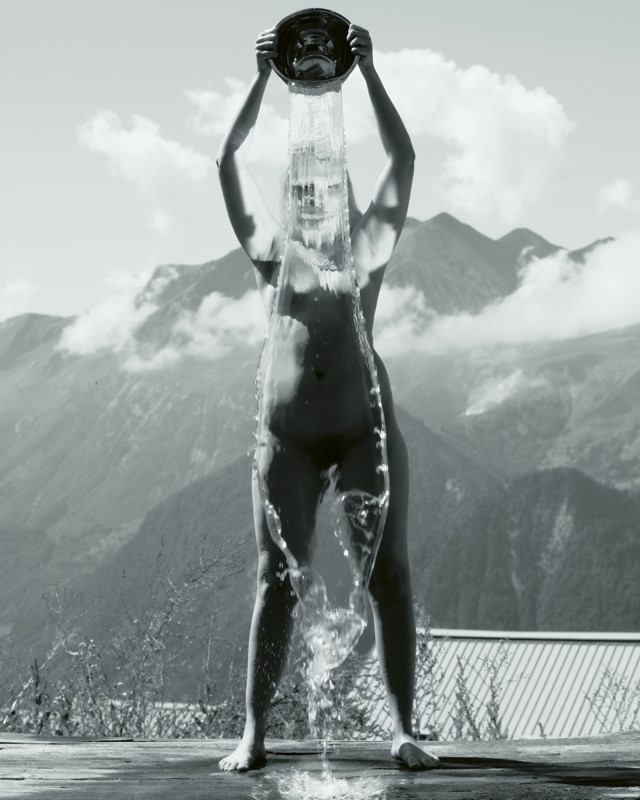
The location for their first volume of the series was, for lack of a better term, muddy. In the northern French countryside, the scenery in part inspired the name of the series, but both image-makers also feel seduced by the nature of sodden earth. “There’s something that’s extremely sensual. And the texture of it, the stickiness of it, how it drips. For me, mud and skin are super similar. We shot it in context, and somehow it made sense,” says Pendlebury, before admitting: “What I’ve never shown you, Arnaud, is that I have a fetish, like an actual fetish for mud.” The series’ sensuality is present, but it’s never carnal or lustful. A black and white image showing a model pouring water in front of her nude body (which they call “the cascade”), with natural light breaking through the ripples and distorting a glassy, goddess-like figure, recurs in every iteration of MUD so far. “Of course there’s going to be slight evolutions in the fact that we’re growing in both of our practices, but in the end it’s still us in that continuity,” says Lajeunie. Pendlebury adds, “I like this idea that it’s literally the same, but with the changes of the girls, and the context, and us growing. We wanted to keep the same idea forever.”
The images are laced with a tinge of nostalgia; a blissful rediscovery of that essence of teenage time wasting, the feeling of the hot sun on bare skin, the smell of dehydrated grass and earth, made relatable in the realness of Pendlebury’s instinctive casting. Nirvana could well be playing in the background. Such summer days are an oblivion, and yet in these images we can indulge in those memories of delightful meaninglessness. Adding to the realness is Pendlebury’s styling. “The clothes are often old Margiela, old Comme des Garçons, or old Lanvin, old Montana – because just a jacket with a pearl necklace, and no hair, no makeup … they live very differently here. I’ve really enjoyed seeing fashion in the context that it’s [usually] not.”
Sourcing from archive collectors is thoughtful in its lack of obvious branding – the fashion dissolves into the context of reportage, capturing girls in the act of girlhood. Having studied textiles and sculpture before, Pendlebury’s proclivity for clothes emerged while assisting a stylist and realising her love for tactility and texture. “We do still lifes when we do the dinners. We work with colours, and jellies, and the cherries there, and then …” Pendlebury crescendos into a moan, and continues, “photography for me is purely layers of textures. The shine is there, and the sky, and the knit that she’s wearing, and the feel of her skin. It’s only those contrasts that create the balance and the excitement. Something works, when all of those things collide.”
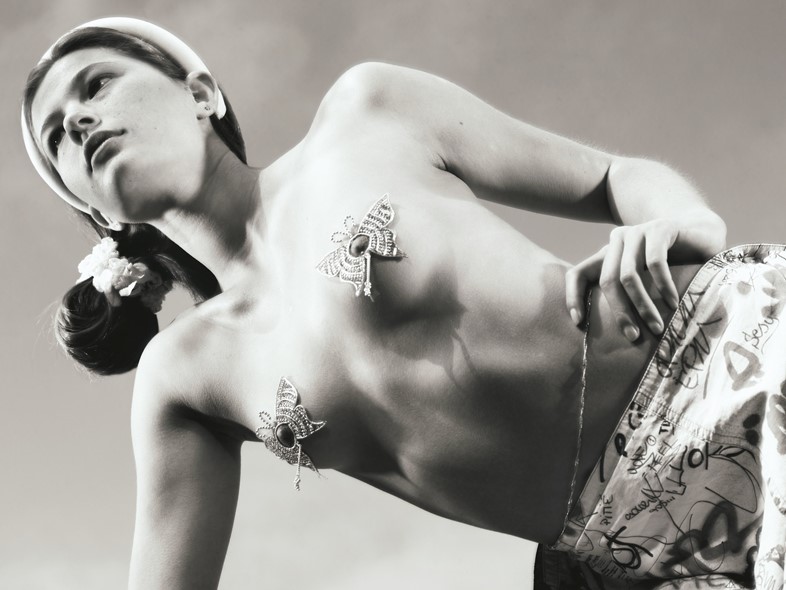
With it now being August, the image-makers are speaking on the day before they start shooting volume five. “This year, we both had a similar feeling. We had the mountains, the lake, the mud, the earth … we wanted something very dry, something very sandy and wide, so we’re going to the sea.” The next instalment is already much anticipated given the response to the previous volumes, and increasing notability of the duo themselves. “We don’t have such a strong message in a political or social way, we just do something dear to us. The fact we don’t question the project much is a blessing,” Lajeunie insists. “This gut feeling is everywhere. In the casting, in the lighting, in the location, in the way we do the books. People see something that is honest.”
MUD volumes 1, 2, 3 and 4 by Georgia Pendlebury and Arnaud Lajeunie are published by Art Paper Editions and are out now.

